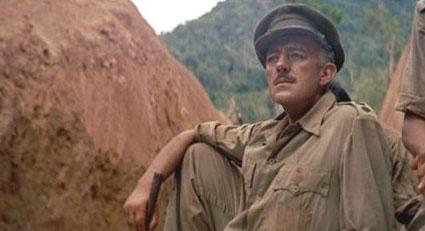| Academy Award Nominations and Winners: |
| ★ | Best Picture |
| ★ | Best Director: David Lean |
| ★ | Best Actor: Alec Guinness |
| Best Supporting Actor: Sessue Hayakawa |
| ★ | Best Adapted Screenplay: Carl Foreman and Michael Wilson |
| ★ | Best Cinematography: Jack Hildyard |
| ★ | Best Film Editing: Peter Taylor |
| ★ | Best Original Score: Malcolm Arnold |
| (Blacklisted screenwriters Foreman and Wilson received their Oscars posthumously; the original recipient was their "front," Pierre Boulle,
the writer of the original novel, who could not speak or write any English) |
|
| Golden Globe Nominations and Winners: |
| ★ | Best Picture (Drama) |
| ★ | Best Director: David Lean |
| ★ | Best Actor (Drama): Alec Guinness |
| Best Supporting Actor: Sessue Hayakawa |
|
| Other Awards: |
| Directors Guild of America: Best Director |
| New York Film Critics Circle: Best Picture; Best Director; Best Actor (Guinness) |
| National Board of Review: Best Picture; Best Director; Best Actor (Guinness); Best Supporting Actor (Hayakawa) |
| British Academy Awards (BAFTAs): Best Picture; Best British Film; Best British Actor (Guinness); Best British Screenplay |

